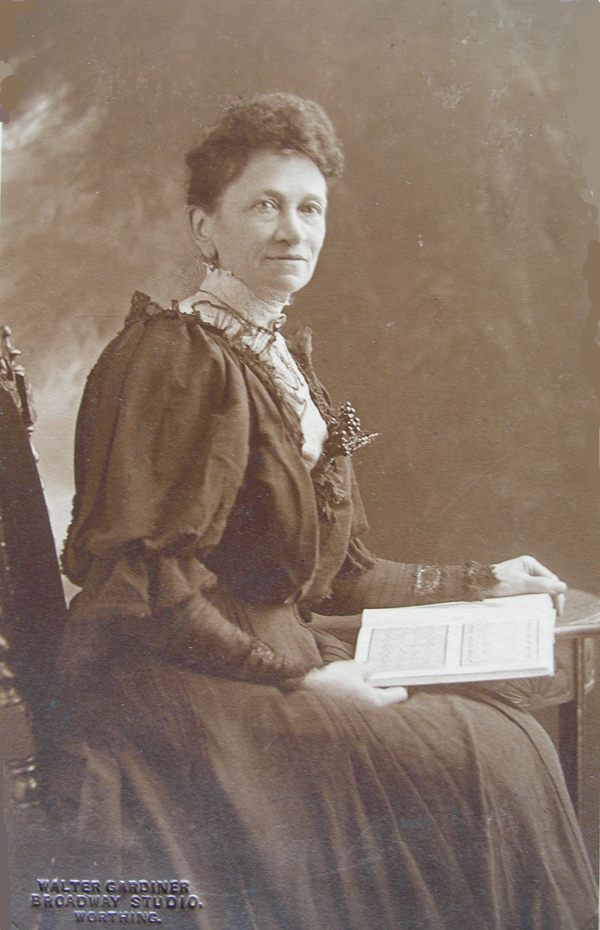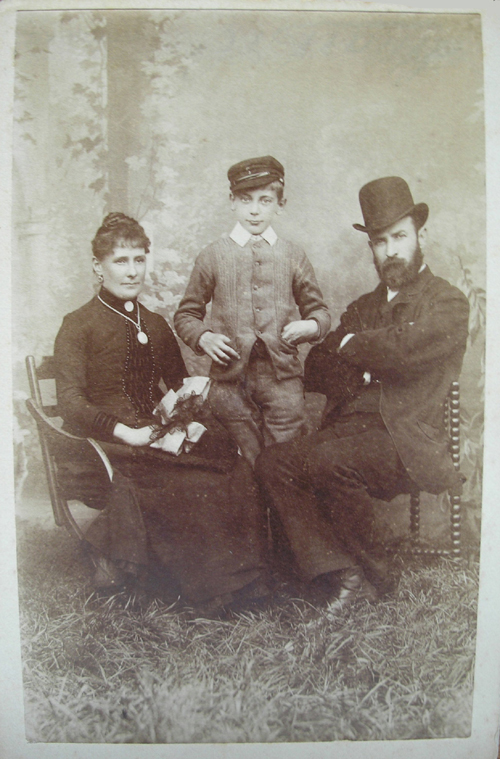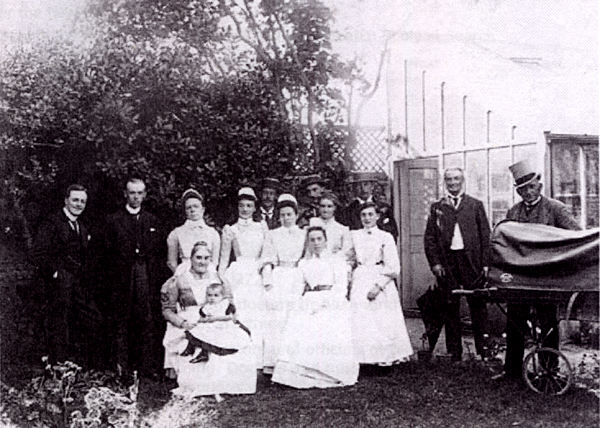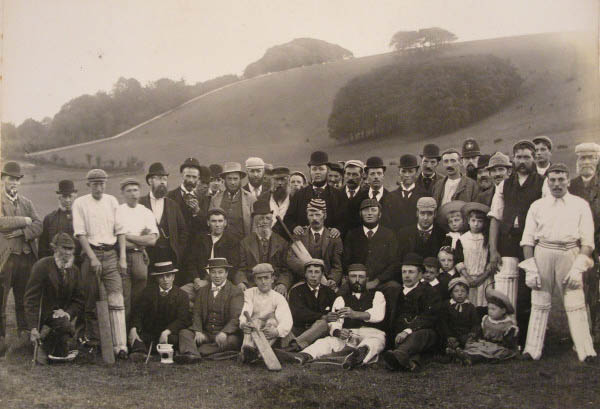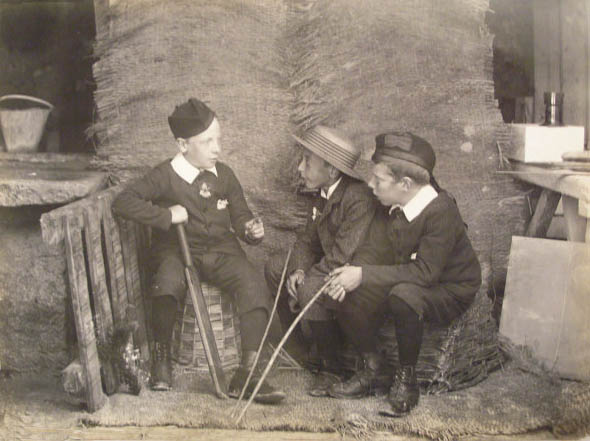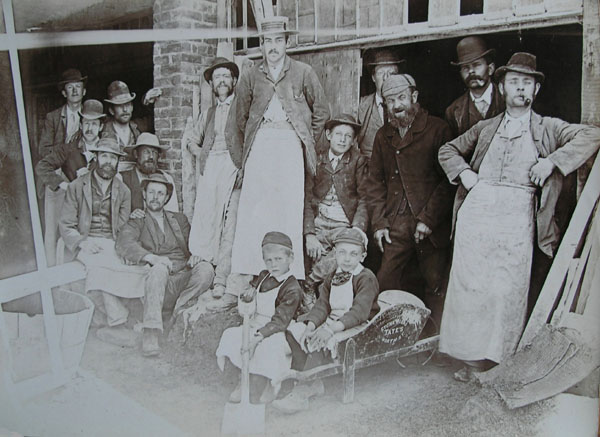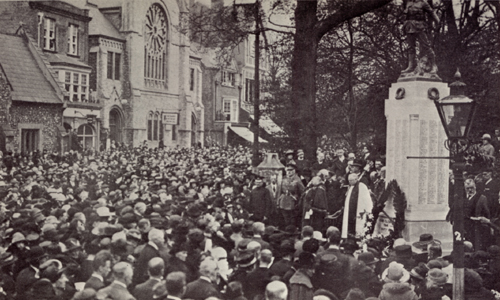Francis Tate was born in Lancing, Sussex, on 13th July 1852, the son of Maria Blowers and George Tate, a gardener from Lancing. George Tate (1814-1902), a native of Lancing, had married Maria Blowers (1809-1891) from Yarmouth, Norfolk on 20th September 1840. A daughter named Charlotte was born about 1847 and her brother Francis arrived five years later.
On 6th April 1874, Francis Tate married Jemima Parker (born 1853, Worthing) at Lancing. Jemima Parker was the daughter of Julia and William Parker, a shoemaker of Worthing. Francis and Jemima Tate settled in London, where Francis worked as a stone mason. Francis and Jemima Tate later adopted a young boy named Harry, who had been born in the Kilburn district of London in 1877. At the time of the 1881 census, Francis Tate was living in London with his wife Jemima and their adopted three year old son, Harry. In the 1881 census return, Francis Tate is described as a twenty-eight year old "Stone Mason" from Sussex.
By the end of 1881, Francis Tate had returned to Sussex and was operating a stone works in Worthing. A local trade directory, published in 1882, lists Francis Tate as a "monumental mason" at North Street, Worthing. Francis Tate's North Street Stoneworks became a highly successful business and was to remain in the Tate family for the next ninety years.
On 4th November 1891, Jemima Tate, Francis Tate's first wife, died of pulmonary tuberculosis at the age of 38. The following year, Francis Tate married Catherine Tucker Judd. [Marriage registered in the St Pancras district of London during the 4th Quarter of 1892. Francis Tate's second wife Catherine Tucker Judd was born in Paddington, London, on 12th May 1862.
Francis and Catherine
Tate's first child, Chrystobelle Dorothy Tate, was born in
Worthing on 5th October 1893. A son named Francis George Charles Tate
arrived some five years later on 12th November 1898. A second son, Martin Leslie Tate,
was born on 4th September 1900, but sadly he died on 24th June 1901 at
the age of nine months.
The 1901 census records Francis Tate and his
family at 22 North Street, Worthing. Francis Tate, the head of
the household, is entered on the census return as a "Stone Mason (Employer)",
aged 48, working "at home". Mrs Catherine Tate, Francis's
thirty-eight year old wife, is listed with her three children -
Chrystobelle, aged 7, two year old Francis, and her baby son Martin, who
was just six months' old and only had three months more to live. Also
residing at 22 North Street, Worthing was Harry Tate, Francis
Tate's adopted son from his first marriage. Harry Tate is entered on the census return
as an "adopted son" and is described as a twenty-three year old
"Stone Mason's Assistant".
Francis and Catherine's fourth child Morrison Herbert Cornwall Tate was born during the second quarter of 1905. Morrison Tate died in 1929 at the age of twenty-four.
Harry Tate,
Francis Tate's adopted son, married Harriett Hollands in 1908. Harry
Tate and his wife Harriett settled in West Tarring. Harry Tate lived
with his family at 'Melbourne', 1 Highfield Road, West Tarring from 1908
until 1942, the year he passed away. Harry Tate died at his home in West
Tarring on 1st November 1942.

[ABOVE ] A portrait of Francis Tate, photographer, master stonemason and sculptor. [Photograph courtesy of Ray George]

[ABOVE] Francis Tate listed as a professional photographer in Kelly's 1899 Directory of Sussex.
